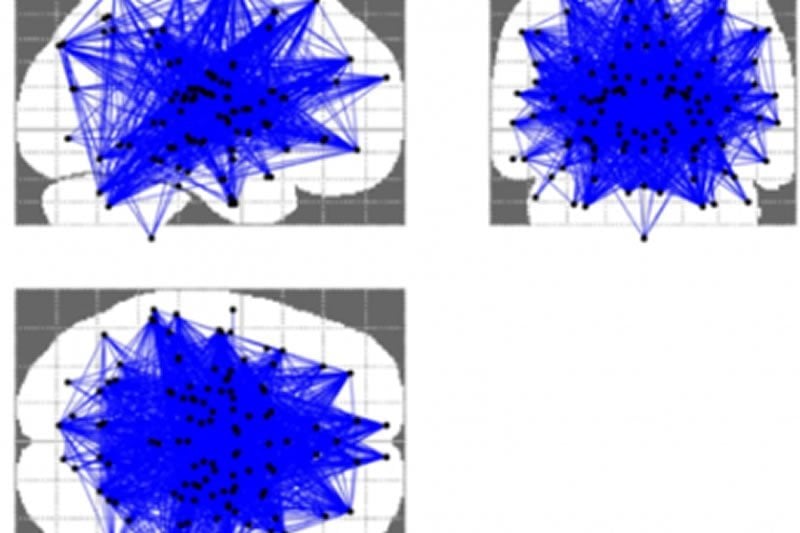Summary: Mu-opioid receptor (MOR) levels are significantly reduced in the striatum in those with schizophrenia. A lack of MOR system stimulation contributes to negative feelings, such as a lack of motivation and anhedonia, associated with the condition. Increasing MOR levels could help to reduce some of the symptoms of schizophrenia.
Source: MRC London Institute of Medical Sciences
Schizophrenia is a severe mental health condition that causes significant disability, and affects 1 in 100 people. Patients with schizophrenia commonly experience negative symptoms, which include lack of motivation, social isolation and inability to experience a pleasurable feeling. The current antipsychotics minimally improve these negative symptoms, and there are no currently licensed treatments. In addition, it is estimated that total service costs for schizophrenia in England alone will be £6.5 billion by 2026. In view of this, there is considerable interest in identifying potential treatment targets for these symptoms. However, the nature of the changes in brain chemistry that contribute to these negative symptoms is unknown.
Mu-opioid receptors (MOR) are found in a region of the brain called the striatum and they play a crucial role in how we experience pleasure and reward. Our bodies naturally produce opioid molecules that include endorphins; which are hormones secreted by the brain that are known to help relieve pain or stress and boost happiness. MORs are receptors that bind these naturally produced endogenous opioid molecules, and stimulation of the MOR system starts a signalling cascade that causes an increase in motivation to seek reward and increase food palatability amongst many other effects. Interestingly, MORs were found to be reduced in the striatum post-mortem in schizophrenia. So, it was unclear whether the availability of these receptors was increased when individuals were alive, or whether reduced MORs was related to the negative symptoms of schizophrenia.
The latest brain scan research from the Psychiatric Imaging group at the MRC LMS published on 3 October in Nature Communications has reported how the MOR system contributes to the negative symptoms displayed in schizophrenia patients. For the first time, this research study showed how MOR levels are significantly reduced in the striatum region of the brain. Thus, a lack of MOR system stimulation in the brain contributes to these negative feelings that schizophrenia patients can experience.
Researchers in this study also used a new analysis method to estimate how MORs are connected within the brain too.
Dr Abhishekh Ashok, an Academic Clinical Fellow in Radiology also of the LMS and Cambridge University Hospital NHS Foundation Trust, and who conducted the study, says:

“The negative symptoms in schizophrenia cause significant distress to patients but there are no approved treatments. That is because the nature of the changes in brain chemistry that contribute to these negative symptoms is unknown. This PET scan research helps to explain alteration in brain chemicals in specific brain circuit that contributes to development of negative symptoms.”
This analysis revealed a marked global increase in connection of MOR availability in patients with schizophrenia, this was more pronounced in the connection of brain circuit called cerebello-thalamo-cortical network.
Oliver Howes, Head of the Psychiatric Imaging group here at the LMS and senior author of this paper, discussed the next steps for this research:
“We desperately need treatment approaches for schizophrenia. This is a promising new lead that could help us develop a new treatment.”
Source:
MRC London Institute of Medical Sciences
Media Contacts:
Sophie Arthur – MRC London Institute of Medical Sciences
Image Source:
The image is credited to Abhishekh Ashok et al.
Original Research: Open access
“Reduced mu opioid receptor availability in schizophrenia revealed with [11C]-carfentanil positron emission tomographic Imaging”. Sarah K. Fiordaliso et al.
Nature Communications doi:10.1038/s41467-019-12366-4.
Abstract
Reduced mu opioid receptor availability in schizophrenia revealed with [11C]-carfentanil positron emission tomographic Imaging
Negative symptoms, such as amotivation and anhedonia, are a major cause of functional impairment in schizophrenia. There are currently no licensed treatments for negative symptoms, highlighting the need to understand the molecular mechanisms underlying them. Mu-opioid receptors (MOR) in the striatum play a key role in hedonic processing and reward function and are reduced post-mortem in schizophrenia. However, it is unknown if mu-opioid receptor availability is altered in-vivo or related to negative symptoms in schizophrenia. Using [11 C]-carfentanil positron emission tomography (PET) scans in 19 schizophrenia patients and 20 age-matched healthy controls, here we show a significantly lower MOR availability in patients with schizophrenia in the striatum (Cohen’s d = 0.7), and the hedonic network. In addition, we report a marked global increase in inter-regional covariance of MOR availability in schizophrenia, largely due to increased cortical-subcortical covariance.







